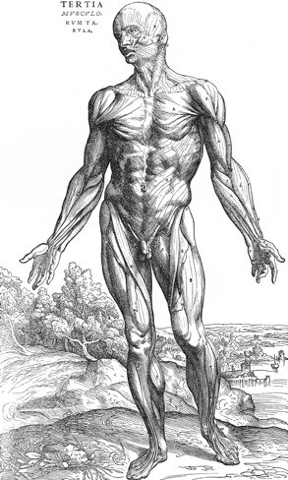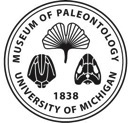Systematics


I am interested in usage of anatomical terminology in vertebrate paleontology. I have written a paper examining some of the deeper systematic questions involved in establishing a standardized terminology for fossil vertebrates or extending existing terminologies such as the Nomina Anatomica Avium (NAA) or Nomina Anatomica Veterinaria (NAV) to cover the sauropsid and synapsid ancestors of birds and mammals, respectively. The paper was published in the September 2006 issue of Journal of Vertebrate Paleontology.
Since that paper was published, two recent descriptions of dinosaur vertebral columns (Harris 2006; O’Connor 2007) have appeared that illustrate one of the points I raised concerning consequences of adopting standardized terminology - “conversions”. Both these descriptions used terminology for vertebral laminae – the bony struts connecting various projecting points on saurischian vertebrae – that I developed in 1999. That terminology did not use standardized terminology for orientation (e.g., “cranial”, “caudal”) or for parts of vertebrae (e.g., “corporo-” for the vertebral body). Instead, I used more generalized terms for orientation (e.g., “anterior”, “posterior”) and parts (e.g., “centro-”). Both authors modified this terminology, but in slightly different ways. O’Connor (2007:128) chose to modify the orientational descriptors (e.g., “anterior” -> “cranial”) to comply with NAA and NAV terminology, but he did not change the terms referring to parts. Harris (2006:1092) recommended more drastic changes to the system, but did not make them fully compliant with NAA/NAV terminology:
Anatomical Terminology
The justifications for terminological conversion (“logical reasons”, “compliance”) are not attached to any greater principle or paradigm-shift; this is standardization for the sake of standardization and has only one concrete result – the creation of two new sets of terms that parallel the original set. Still other sets of parallel terms for vertebral laminae are in the offing for researchers whose ears are tuned differently and are willing to adopt more or less fully compliant standardized terms. I commented on this in a recent paper revisiting vertebral laminae (Wilson, 2012).
A more recent paper by Edgecombe (2008) revisits the issue from an invertebrate perspective. Although he views Harris’ (2004) proposed anatomical standardization as being a gain “worth the pain”, he doesn’t go so far as to tie anatomical names to homologous structures. Instead, he suggests they should be linked to primary homology (sensu de Pinna 1993). While I still disagree with the standardization, I agree that anatomical terms shouldn’t be tied to cladograms: “Using anatomical terminology to communicate a message of homology pre-empts an important step in evolutionary studies, namely resolving phylogenetic relationships based on comparisons of available character distributions. Anatomy, whether standardized or not, cannot act as both an impartial description of parts and the narration of their morphological transformation.” (Wilson 2006:515).
de Pinna, M. C. C. 1991. Concepts and tests of homology in the cladistic paradigm. Cladistics 7:367–394.
Edgecombe, G. D. 2008. Anatomical nomenclature: homology, standardization and datasets. Zootaxa 1950:87–95.
Harris, J. D. 2006. The axial skeleton of the dinosaur Suuwassea emilieae (Sauropoda: Flagellicaudata) from the Upper Jurassic Morrison Formation of Montana, USA. Palaeontology 49:1091–1121.
O'Connor, P. M. 2007. Postcranial axial skeleton of Majungasaurus crenatissimus (Theropoda: Abelisauridae) from the Late Cretaceous of Madagascar. Society of Vertebrate Paleontology Memoir 8:127–162.
Wilson, J. A. 1999. Vertebral laminae in sauropods and other saurischian dinosaurs. Journal of Vertebrate Paleontology 19:639–653.
Wilson, J. A. 2012. New vertebral laminae and patterns of serial variation in vertebral laminae of sauropod dinosaurs. Contributions from the Museum of Paleontology, University of Michigan 32: 91–110.
“...many of the terms created by Wilson (1999) utilize the roots ‘anterior’ and ‘posterior’ (e.g. ‘posterior centrodiapophyseal lamina’), terms that are, for logical reasons, abandoned in favour of ‘cranial’ and ‘caudal’. Constructing literal modifications of Britt’s and Wilson’s terms to conform to Baumel et al. (1993) produces awkward, cacophonous terms (e.g. ‘lamina corporo-processus transversus’ for ‘centrodiapophyseal lamina’). Thus, the terms introduced by Britt and Wilson are retained here, unchanged, though modified such that ‘anterior’ and ‘posterior’ and the prefixes ‘pre’ and ‘post’ have been replaced with ‘cranial’ and ‘caudal’, and ‘centro-’ has been replaced with ‘corporo-’.”
New analysis also bring new hypotheses of relationship, which are often accompanied by new clade names. With more than a score of cladistic analyses of Sauropodomorpha, many new names have been created and there is no sign of this slowing. Unlike new genus and species names, new clade names aren’t based on fossil objects that can be demonstrated to be valid or invalid. Clade names are indicated by reference taxa that ‘point’ to a node, and they exist unless they become synonymous with an earlier-named taxon. There is the potential, then, to name every branch point on a cladogram twice (using one node-based and one stem-based name). I think most would agree that this would be a confusing situation, but what is to stop a researcher for creating a new clade name? I am interested in investigating a set of recommended conditions or criteria for naming new nodes in phylogenetic taxonomy.
Naming Names
